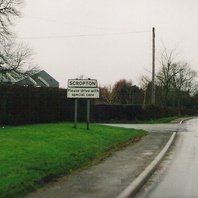
Viking Names
Scropton
Scropton, in the Appletree Hundred of Derbyshire, comes from the Old Norse male personal name Skropi and the Old English tun ‘farm, settlement’. It is thus a hybrid name. It is a joint parish with Foston.
Read More
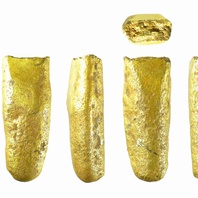
Viking Objects
Gold Ingot (BH-720251)
The Vikings arriving in England had a bullion economy in which they paid for goods, most commonly, with silver that was weighed to an amount agreed between the buyer and the seller. Though rarer than silver equivalents, this gold ingot formed part of the bullion currency used by Vikings in England. It took some time for the Scandinavian settlers to adopt a monetary economy like that of the Anglo-Saxons, and both systems were used simultaneously for a while before they fully adopted the new system. The Vikings were familiar with monetary economies but they treated coins as just another form of bullion before adoption of a monetary economy.
Read More
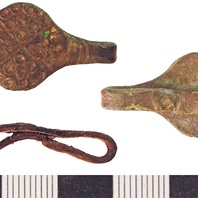
Viking Objects
Imitation Finger Ring (NLM-D675CA)
This finger ring bears stamped decoration imitating the Scandinavian ring and dot pattern which is bordered by incised crossing diagonals of a saltire. The ring- and dot-style of decoration was briefly adopted by inhabitants of Anglo-Saxon settlements such as Cottam in Yorkshire and Flixborough in Lincolnshire.
Read More
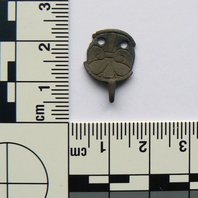
Viking Objects
Hooked Tag (PUBLIC-6847A6)
This hooked tag is constructed from a circular plate and single hook. The decoration features a trefoil with fillet design on the front probably influenced by the Ringerike style.
Read More
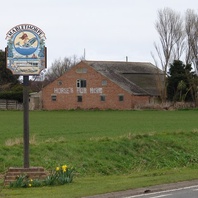
Viking Names
Mablethorpe
Marblethorpe, in the Calceworth Wapentake of Lincolnshire, comes from a likely Continental Germanic male personal name Malbert and Old Norse þorp ‘a secondary settlement, a dependent outlying farmstead or hamlet’.
Read More
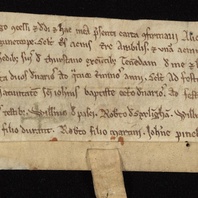
Collection
Viking Names
Place-names On these pages you can find out about the names the Vikings gave to the places in which they settled down in the East Midlands. As commonly throughout England, most place-names referring to settlements consist of two elements. The second element is called the ‘generic’ and refers to the kind of place being named. The first element is the ‘specific’ which denotes a particular settlement of that kind. Most major place-names (of towns and villages) in England were given in the Old English language. In areas settled by Vikings, such as the East Midlands, we can also see how their language was used to coin names. These are sometimes wholly in Old Norse, and sometimes they are in a mixture of Old Norse and Old English, suggesting interaction between the incomers and the locals. Typical Old Norse generics recognisable in the modern forms of the names are -by, denoting a farm or settlement, and -thorpe, denoting an outlying settlement of some type. Nowadays, these mostly refer to villages, but some of these have grown into sizeable towns, such as Grimsby in Lincolnshire. Also typical of some of the East Midlands is that the early medieval administrative divisions are called ‘wapentakes’, from the Old Norse vápnatak ‘taking of weapons’. This term may refer to the brandishing of weapons as a sign of assent at a legal assembly. Elsewhere in England (and in Derbyshire and Leicestershire) these divisions are known by the English term ‘hundred’. Our virtual museum has only a selection (though a growing one) of relevant place-names. We have focused on place-names that include Old Norse elements, but have also included some purely Old English names where these are locations for significant Viking Age finds. For a quick and easy guide to the most likely interpretations of all major names in England, please visit the Key to English Place-Names. Personal names Many Viking place-names contain personal names as their first element. In Gunthorpe, Nottinghamshire, for example, the first element is the female name Gunnhildr. Although we don’t know for sure, we assume that this kind of name means that the settlement once belonged to a woman who gave her name to it. An interesting group of names in Nottinghamshire are where a Scandinavian personal name is combined with the English generic -ton (one of the most common place-name generics across England, which also refers to a settlement). Examples in the Trent Valley include Gonalston, named after Gunnolf, or Rolleston, named after Hroaldr. Interestingly, Rolleston in Leicestershire, though apparently identical, seems to have been named after Hrolfr (or possibly the cognate English name Hrothwulf). The only way of distinguishing between the two is to examine the earliest spellings of these names. Compare the spelling of the Leicestershire Rolleston as Roveston in 1086 and Rolveston in 1156 with that of the Nottinghamshire one as Roldeston in 1086. This is the kind of work done by the English Place-Name Survey based at the University of Nottingham. Also in this collection you can find out more about Old Norse personal names. We have included many personal names taken from the place-names of the East Midlands. Unfortunately, Gunnhildr is a rarity and these do not include many female names. For the female names, then, we have looked at other sources, particularly from the neighbouring county of Yorkshire, to give an idea of the kinds of names being used at the time. For each individual name you will be given an anglicised form (adjusted to the spelling of modern English) and an Old Norse form. Each name will also be given in one or more runic alphabets, and will be linked to appropriate place-names where relevant. Header image: Mi D 529 (c) University of Nottingham Manuscripts and Special Collections, used with permission
Read More
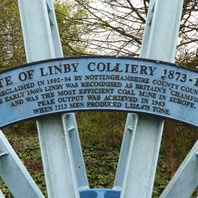
Viking Names
Linby
Linby, in the Broxtow Wapentake of Nottinghamshire, comes from Old Norse lind ‘a lime tree’ and by ‘a farmstead, a village’.
Read More

Viking Names
Gunngifu
Gunngifu is a postulated Anglo-Scandinavian hybrid female personal name formed from the very common Old Norse element Gunn- from gunnr, guðr ‘battle’ combined with the Old English element gifu ‘gift’. There is a possible attestation of the name in a medieval document from Lincolnshire.
Read More

Viking Names
Scartho
Scartho, in the Bradley Wapentake of Lincolnshire, is a difficult name. The second element is clearly Old Norse haugr ‘a hill, a mound’. The first element, however, has been the subject of much discussion. It has been suggested that the first element is the Old Norse male personal name Skarði or the Old Norse element skarð ‘an opening, an open place in the edge of something, a gap, a mountain pass’. Since the area is now built up, it is nearly impossible to determine the exact topography of the place. It may be pointed out that there are patches of glacial sand and gravel and alluvium at the top of the hill. It has also been suggested based on forms of the name in Scarf- that the first element is Old Norse skarfr ‘a cormorant’, but these spellings occur in only one source. On balance, skarð provide an acceptable first element, but twentieth-century development makes certainty impossible.
Read More
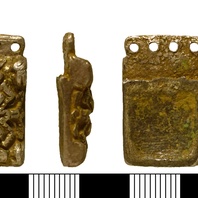
Viking Objects
Carolingian Style Strap-End (NARC-10F5B2)
This silver strap-end is decorated with foliate design cast in relief and is categorized as Thomas (2003) Class E, Type 5 (Carolingian). Carolingian belt fittings from England could have been imported either indirectly through Scandinavia or directly from the Continent. It is possible that this strap end was brought over by Scandinavians after their raids on the continent.
